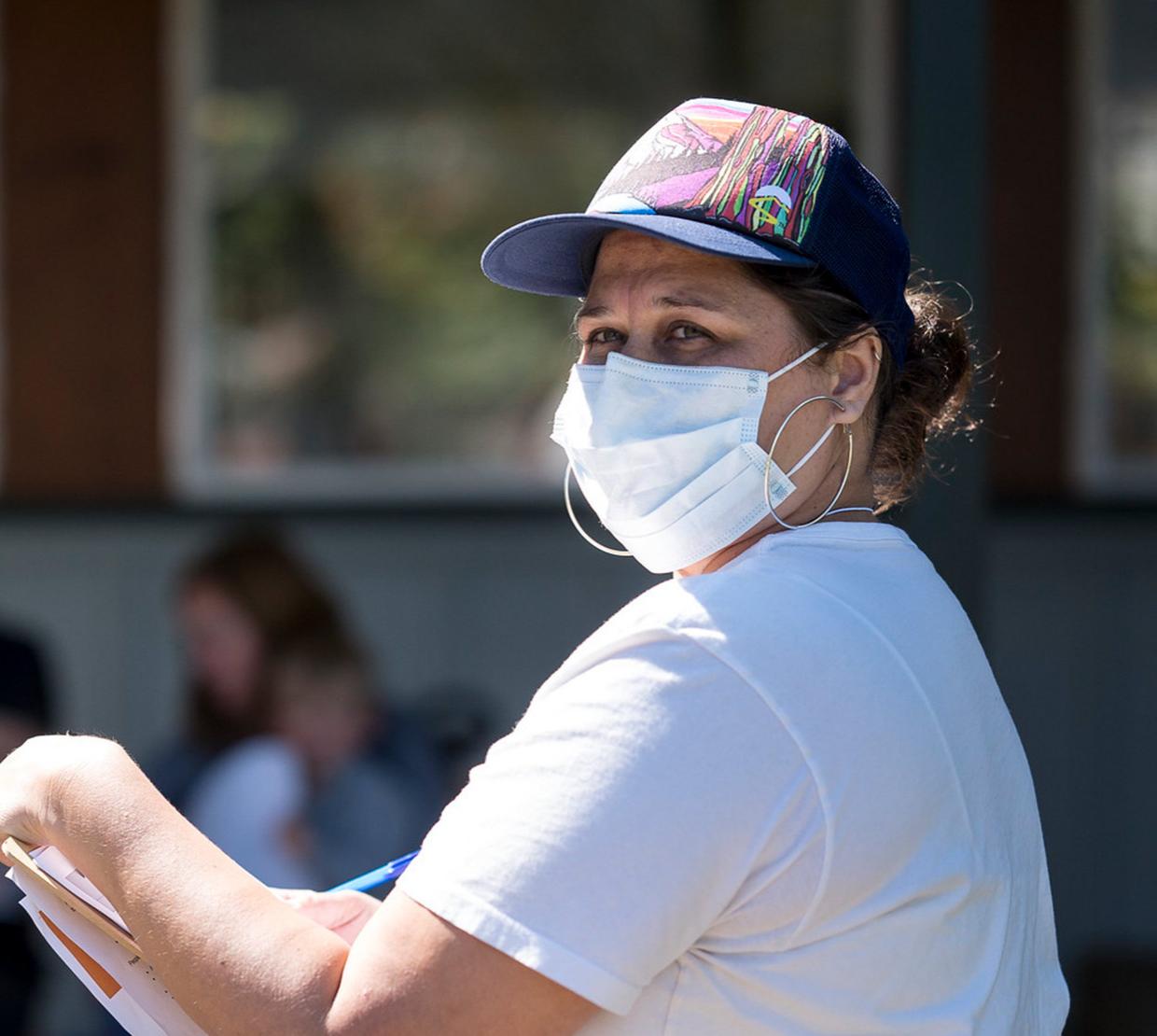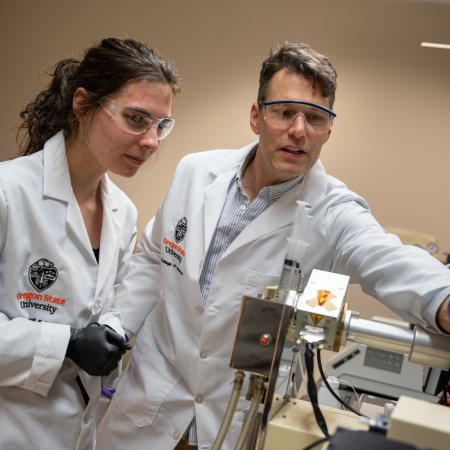Corvallis, Ore. — Results from the second weekend of door-to-door sampling May 2-3 by Oregon State University suggest that about one person in 1,000 in the Corvallis community had the novel coronavirus that causes COVID-19 during that period.
The study, Team-based Rapid Assessment of Community-Level Coronavirus Epidemics, known as TRACE-COVID-19 for short, began the weekend of April 25-26 and continued May 9-10.
“Week two of TRACE sampling reveals a similar pattern to week one,” said Ben Dalziel, an assistant professor in OSU’s College of Science and the project leader. “The prevalence of the SARS-CoV-2 virus in Corvallis remains relatively low, and results from the two weeks are not statistically different.
“These relatively low levels are consistent with what we would expect with high compliance in Corvallis with Gov. Brown’s Stay-Home-Save-Lives policy and are also consistent with the number of COVID-19 cases reported by health care professionals in our community.”
Dalziel said the fourth and final weekend of Corvallis sampling, originally scheduled for May 16-17, will take place after the easing of state stay-at-home orders and will help determine if relaxing restrictions leads to a jump in the prevalence of the virus in the Corvallis community.
On the second weekend of sampling, 30 two-person field teams visited 359 homes spread among 30 census blocks in Corvallis. Seventy-seven percent of the households where someone answered the door had at least one person agree to participate, resulting in the sampling of 672 people.
None of the samples collected tested positive for SARS-CoV-2, the virus that causes COVID-19.
“The goal of TRACE is to estimate how many people are infected in an entire community,” said Dalziel. “We use a prevalence model that takes positive and negative results as inputs while also taking other information into account to understand what is happening in the population at large.”
On TRACE’s opening weekend, 455 people were sampled. First-week results suggested that about two people per 1,000 in the Corvallis community had the virus.
In announcing weekly prevalence results, the TRACE teams follows reporting policies used by Oregon Health Authority and local health departments by not announcing limited numbers of positive cases between 1 and 9 cases. Doing so may contribute to identifying an actual community member who tested positive, Dalziel said.
While one case in 1,000 may seem like a low number, it is important to remember that prevalence is not the same as risk, said Jeff Bethel, an associate professor in OSU’s College of Public Health and Human Sciences and part of the TRACE leadership team.
“Prevalence only indicates how relatively abundant the virus is in a target population,” Bethel said. “It doesn’t tell you your likelihood of getting the virus but can help you understand the likelihood of encountering someone with the virus.”
He illustrates the point with some hypotheticals: If a coffee shop has had 10 customers in the last hour, there is a 1% chance at least one of them is infected.
“You proceed to the grocery store where 100 people are present or have visited that morning. The chance that at least one of those people was infected is about 10 in 100 or 10%,” Bethel said. “Finally, you go to some event or venue where 1,000 people have come through in the last hour. The chance that at least one of these people is infected is greater than 50%.
“The more people you encounter, the greater the likelihood that you will be in contact with someone who has the virus,” he said. “Social distancing, wearing a mask and washing your hands will help, but it is a numbers game: The more people you are around, the greater the odds of encountering an infected person. Relaxing stay-at-home policies will undoubtedly increase the number of contacts most people have.”
Those tested during the first two weekends have received their results by mail and could also opt to check their results on a secure web portal managed by TRACE. Consistent with state requirements, all test results were shared with the county health department and the Oregon Health Authority.
Results from the third weekend of sampling will be reported about one week from now.
Corvallis’ population is 58,641, comprising more than half of the 93,053 people who live in Benton County. TRACE results are peer-reviewed by scientists at Oregon State University and two other universities, none of whom is associated with the project.
The TRACE study is a collaboration of five OSU colleges – Science, Agricultural Sciences, the Carlson College of Veterinary Medicine, Engineering, and Public Health and Human Sciences – in partnership with the Benton County Health Department.
The study is being initially funded by OSU and a grant from the David and Lucile Packard Foundation, and has been aided by work from the OSU Foundation and the OSU Alumni Association. The diagnostic testing component of TRACE operates through a partnership between the Oregon Veterinary Diagnostic Laboratory, which is located at OSU, and WVT Laboratory.
“We are very grateful to the Corvallis community for embracing and participating in the project,” Dalziel said. “It is only through strong community engagement that any public health project can succeed, and we have had exceptionally high cooperation rates. We are very fortunate to live and work in a community that understands we are all connected, and one that values and supports science.”
At each home visited by TRACE field workers, members of the household are invited to participate in the study. Those who choose to take part are asked to provide information such as their name and date of birth; to fill out a simple consent form; and to answer a few confidential, health-related questions.
Participants are given a nasal-swab test kit that they administer to themselves inside their home and their minor children if they want them to take part. The field staff wait outside, and the participants leave the completed test kits outside their front door. Field staff maintain a safe distance at all times and do not enter anyone’s home. The safety of participants and TRACE field staff is a key part of the study’s research design, Bethel said.
The tests used in TRACE-COVID-19 collect material from the entrance of the nose and are more comfortable and less invasive than the tests that collect secretions from the throat and the back of the nose.
The field workers leave participants with information about the project and how they will receive their results – expected to be available in seven to 10 days – as well as health guidance from the Benton County Health Department and the Centers for Disease Control and Prevention. Participants in the study are sent their results and those of their minor children by secure e-mail with receipt by standard mail delivery as a backup. Everyone’s personal information is safeguarded.
For more information on the project, visit the TRACE-COVID-19 website. The site includes a list of frequently asked questions.
COVID-19, first reported to the World Health Organization on Dec. 31, 2019, has been confirmed in more than 4 million people worldwide and killed more than 287,000 people. In the United States, there have been more than 1.3 million reported cases – including more than 3,300 in Oregon – and more than 82,000 deaths nationwide. As of May 14, Benton County has had 48 confirmed cases and five deaths.




